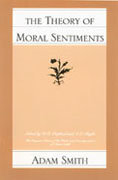Question
35 Research suggests that a high-quality universal (free to all families) system of Pre-K education would help to offset the adverse effects on learning in
35 Research suggests that a high-quality universal (free to all families) system of Pre-K education would help to offset the adverse effects on learning in low socioeconomic status households. The mayor of New York City proposed such a system for NYC, and some members of Congress have advocated for a national system.
Economists using economic reasoning would use which of the following to determine whether the United States should high-quality universal system of Pre-K education:
Select one:
A.
An analysis of the societal gain of the policy through an examination of the positive effects on equity in the United States regardless of the cost to government.
B.
An analysis of the total benefits of the policy to society through an examination of how the policy would improve learning.
C.
An analysis of the net benefit of the policy to society through an examination of the marginal benefits and marginal costs.
44 Many economists hold the position that government should use cost-benefit analysis to determine whether to implement a policy. Their argument is that only policies that demonstrate a net benefit (based on a cost-benefit analysis) should be implemented. We discussed in class an important critique of the use of cost-benefit analysis for policies that affect health and the environment.
Which of the following most accurately represents the argument against relying on cost-benefit analyses for policies that affect human health and the environment?
Select one:
A.
Some costs and benefits are impossible to monetize. For example, how does one calculate the value of protecting coral reefs, polar bears, and other species whose habitats and existence are at risk from global warming?
B.
It is possible to accurately monetize the value of biodiversity but not the value of human life.
C.
It is possible to accurately monetize the value of human life but not the value of biodiversity.
D.
Cost-benefit analysis is a tool promoted by radical environmentalists who care more about animals than wealth creation. For example, they care more about the survival of the spotted owl than the livelihoods of those working in the logging industry.
D.
An analysis of the total costs of the policy to society through an examination of the costs of such a large program and their effect on the government budget.
Step by Step Solution
There are 3 Steps involved in it
Step: 1

Get Instant Access to Expert-Tailored Solutions
See step-by-step solutions with expert insights and AI powered tools for academic success
Step: 2

Step: 3

Ace Your Homework with AI
Get the answers you need in no time with our AI-driven, step-by-step assistance
Get Started


